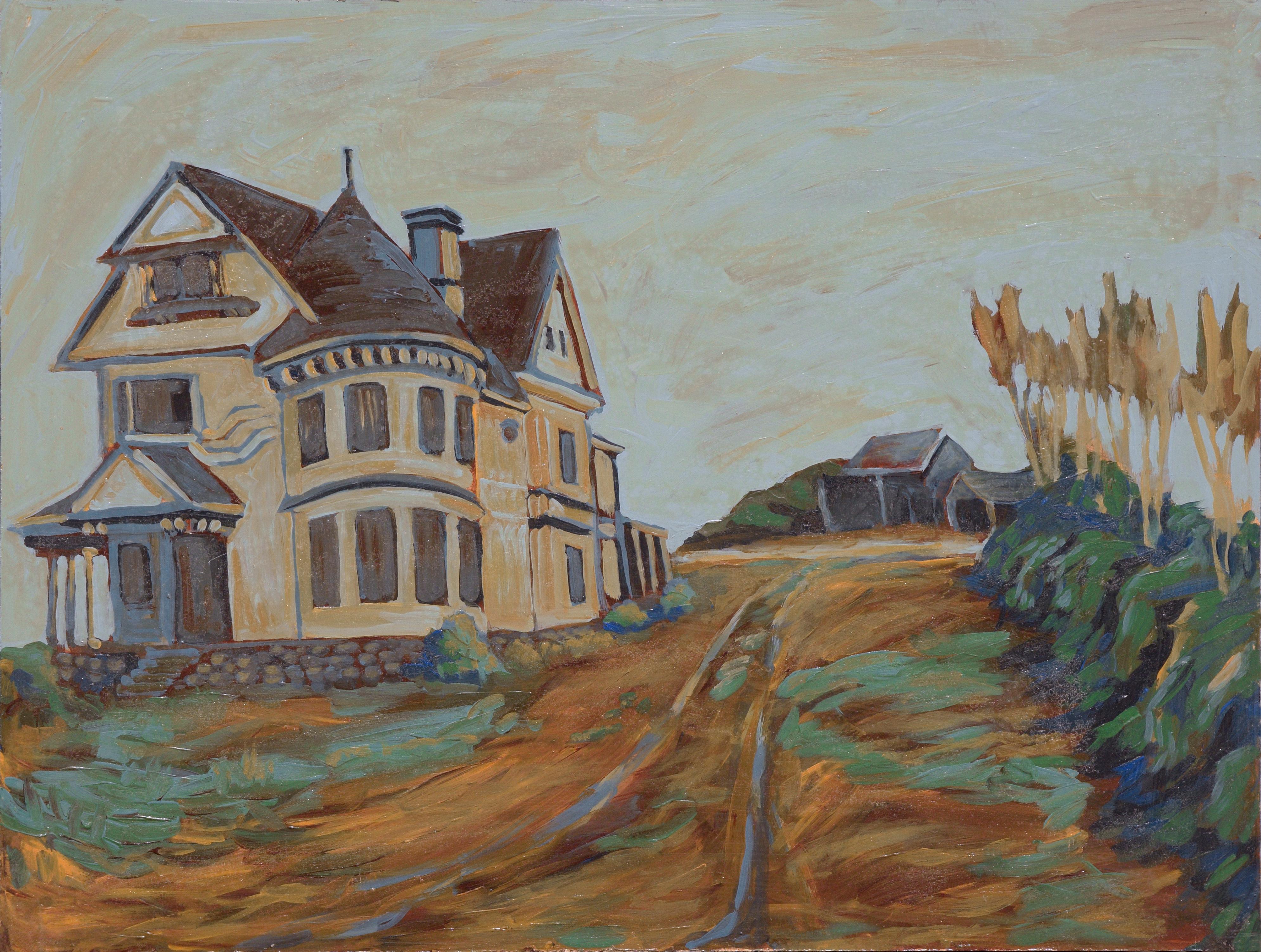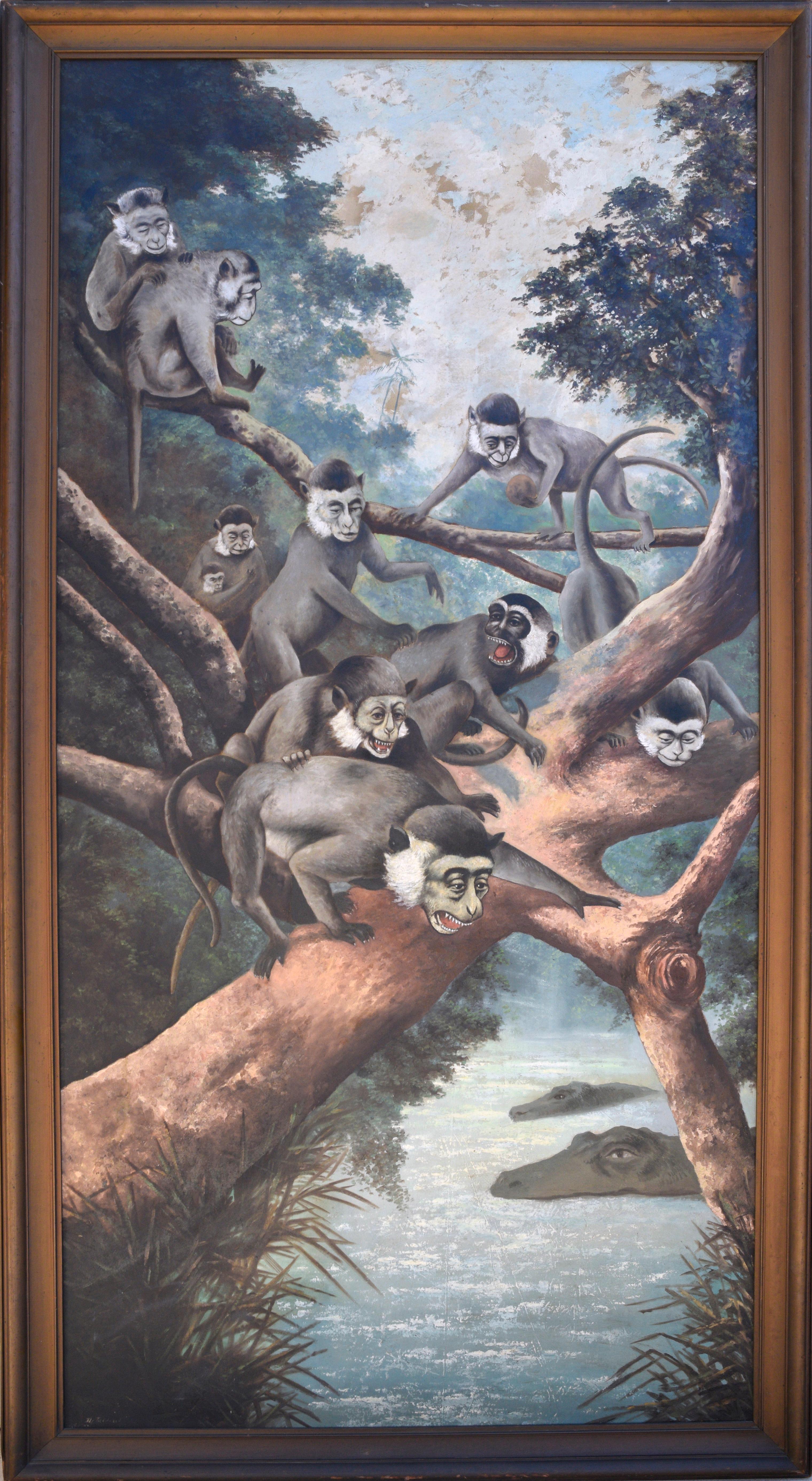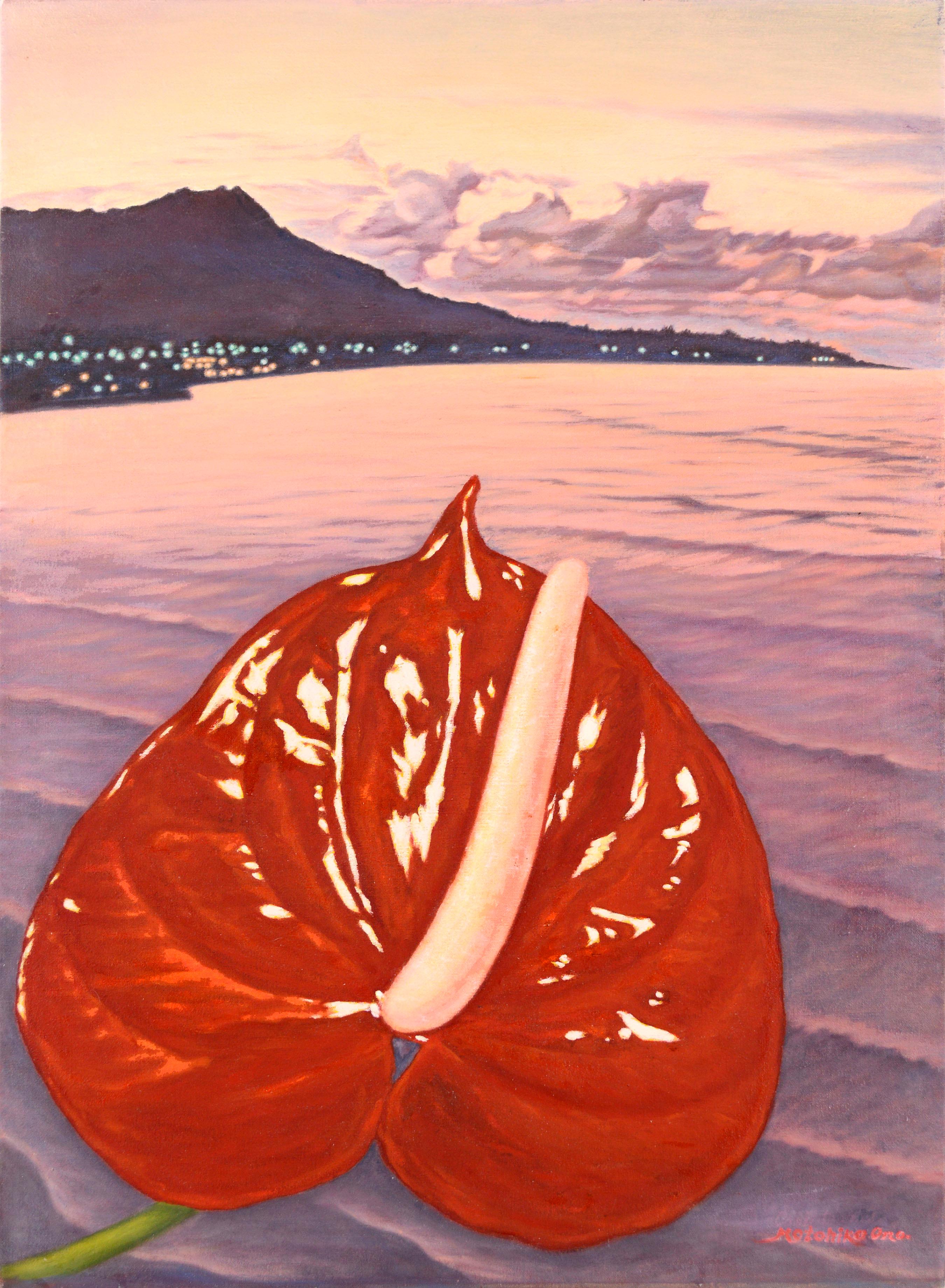Items Similar to " Summer Evening Southwest Texas " 1909 Texas Hill Country
Want more images or videos?
Request additional images or videos from the seller
1 of 8
Julian Onderdonk" Summer Evening Southwest Texas " 1909 Texas Hill CountryDated 1909
Dated 1909
About the Item
Julian Onderdonk "Summer Evening S. W. Texas" Texas Hill Country
(1882 - 1922)
San Antonio Artist
Image Size: 9 x 12
Frame Size: 15 x 18
Medium: Oil on panel
Dated 1909
"Summer Evening S. W. Texas"
"A Texas Painter Worked Under the Radar in New York," By Eve M. Kahn, March 6, 2014, The New York Times
Onderdonk, a San Antonio native who died of an intestinal ailment in 1922, at 40, is best known for painting swaths of Texas bluebonnets. Those canvases can bring more than $500,000 each, while his New York scenes usually end up in the five-figure range.
Onderdonk’s parents were painters in San Antonio, and in 1901, when he was a teenager, they sent him to New York for training. Through 1909, he lived in various Manhattan apartments and Staten Island houses. He then returned to Texas, but continued to spend months at a time in New York.
In 1902 he had married a Manhattan teenage neighbor, Gertrude Shipman. While she focused on raising their daughter, Adrienne, and worrying about their strained finances, “he created more than 600 works of art, often producing a painting or two a day,”
Eyewitnesses recorded his prolific pace in New York, but Onderdonk works bearing those dates rarely turn up. The puzzling gap in his productivity is explained in family correspondence that the Bakers uncovered: The artist admits that he was signing pieces with pseudonyms. He mostly used Chas. Turner and Chase Turner and occasionally resorted to Elbert H. Turner and Roberto Vasquez.
Julian Onderdonk was the son of the important Texas landscapist, Robert Onderdonk. He was the father's pupil at age 16. Sponsored by a Texas patron, he studied at the Art Students League in New York when he was 19, the pupil of Kenyon Cox, Frank DuMond, and Robert Henri. He also studied with William Merritt Chase on Long Island. In 1902, having lost his Texas patron because he married, he asked $18 for 12 paintings at a Fifth Avenue dealer in New York City, and was glad to accept $14 for the lot.
In 1909, Julian Onderdonk returned to the family studio in San Antonio. He painted "the bigness of Texas, dusty roads, the blooming cactus or hillsides of blue lupine, rolling gulf clouds, aged liveoaks, and the gray brush in winter. His style changed somewhat in his later years."
Onderdonk was heavy-set with dark eyes and hair, quiet and serious, "a strong personality." When he died at 40, "five of his pictures were on the way to New York. He also had orders ahead for $20,000 of work." He was known as the painter of the bluebonnet flowers of Texas.
- Creator:Julian Onderdonk (1882-1922, American)
- Creation Year:Dated 1909
- Dimensions:Height: 15 in (38.1 cm)Width: 18 in (45.72 cm)Depth: 4 in (10.16 cm)
- Medium:
- Movement & Style:
- Period:
- Condition:Great brush work and rare scene by Julian Onderdonk. Original Frame is spectacular. Please check our 1stdibs storefront for additional goodies.
- Gallery Location:San Antonio, TX
- Reference Number:1stDibs: LU76934771222
About the Seller
5.0
Vetted Seller
These experienced sellers undergo a comprehensive evaluation by our team of in-house experts.
Established in 1974
1stDibs seller since 2017
82 sales on 1stDibs
Typical response time: 2 hours
- ShippingRetrieving quote...Ships From: San Antonio, TX
- Return PolicyThis item cannot be returned.
More From This SellerView All
- "FALL LANDSCAPE" HILL COUNTRYBy Gary Lynn RobertsLocated in San Antonio, TXGary Lynn Roberts (Born 1953) Texas Artist Image Size: 20 x 16 Frame Size: 28.5 x 24.5 Medium: Oil Dated 1973 "Fall Landscape" Gary Lynn Roberts (Born 1953) ...Category
1970s Impressionist Landscape Paintings
MaterialsOil
- "LATTICE ROSE" LOVELY LADY IN A GARDEN.Located in San Antonio, TXRichard Johnson (Born 1953) Chicago Artist Image Size: 40 x 30 Frame Size: 48 x 38 Medium: Oil "Lattice Rose" Richard Johnson (Born 1953) Richard S. Johnson The luminescent beauty and lyrical quality of Richard S. Johnson's work is what captivates collectors today. "Old Masters" technical virtuosity, pre-Raphael romanticism, and contemporary expressionism and abstraction all combine to create his unique works of touching depth and artistry. Rick's expressive skill for capturing the human form has brought him to the attention of the international art world. He was most recently profiled in the January 2009 edition of The American Art Collector and his skill has brought him numerous commissions: John F. Kennedy at the JFK Memorial Library in Boston, A commemorative painting of the presidents from Eisenhower to Bush currently hanging at the President's Council on Physical Fitness in Washington D.C. Rear Admiral Richard S. Truly, USN, the first commander of the NASA Space Shuttle...Category
21st Century and Contemporary Impressionist Figurative Paintings
MaterialsOil
- "Sleeping Lady Mountain" Image 12 x 16 Frame: 19 x 23By Porfirio SalinasLocated in San Antonio, TXPorfirio Salinas (1910-1973) San Antonio Artist Image Size: 12 x 16 Frame Size: 19 x 23 Medium: Oil on Canvas "Sleeping Lady Mountain" Iztaccihuatl, Volcano in Mexico Biography Porfirio Salinas (1910-1973) Porfirio Salinas was a self-taught artist who painted landscapes of Central Texas with an emphasis on the vast bluebonnet fields that grow there in the springtime. Born in 1910 in Bastrop, Texas, he attended public schools in San Antonio. He also observed works in progress by the director of the San Antonio Art School, Jose Arpa, as well as landscape painter, Robert Wood. Wood is said to have paid Salinas five dollars a picture to paint bluebonnets because "he hated to paint bluebonnets". Salinas served in the military from 1943 to 1945. Although he was assigned to Fort Sam Houston, he was allowed to live at home. At the fort, Colonel Telesphor Gottchalk assigned him to paint murals for the officers lounge and various other projects, and Salinas continued to be able to paint during his entire conscripted period. Even before he achieved notoriety among galleries, dealers, and museums, Salinas was widely followed and appreciated by many Texans, including former President Lyndon B. Johnson, who may be considered responsible for launching Salinas popularity beyond the boundaries of Texas. In 1973, Texas capital, Austin, honored Salinas for having "done much to bring the culture of Mexico and Texas closer together with his paintings". Salinas died in April 1973 in San Antonio, Texas. From the years of the Great Depression through President Lyndon Johnson's Great Society of the 1960s, Texan Porfirio Salinas (1910-1973) remained one of the Lone Star State's most popular artists. Today, his works remain popular with Texas collectors and those who love landscapes of the beautiful "Hill Country" that lies in the center of the state. One of the first Mexican-American painters to become widely recognized for his art, Salinas was a favorite of President Lyndon Johnson and his wife, Lady Bird Johnson, as well as of Sam Rayburn, the longest-serving Speaker of the House of Representatives, and Texas Governor John Connelly. In fact, President Johnson...Category
1960s Impressionist Landscape Paintings
MaterialsOil
- "CAREFREE" WESTERN, COWBOYS, HORSES, CATTLE, PRICKLY PEAR CACTUS (1921-1990)By James BorenLocated in San Antonio, TXJames Boren (1921 - 1990) Waxahatchie, Texas / Oklahoma Artist / Member Cowboy Artists of America Image Size: 28 x 42 Frame Size: 40 x 53 Medium: Oil "Ca...Category
1970s Impressionist Landscape Paintings
MaterialsOil
- "APRIL" TEXAS HILL COUNTRY BLUEBONNETS IMAGE: 25 X 30 FRAME: 33 X 38 CIRCA 1940SLocated in San Antonio, TXRobert Wood (G. Day) (1889 -1979) San Antonio Artist Image Size: 25 x 30 Frame Size: 33 x 38 Medium: Oil "April" Texas Hill Country Bluebonnets Biography Robert Wood (G. Day) (1889 -1979) A painter of realistic landscapes reflecting a vanishing wilderness in America, Robert Wood (not to be confused with Robert E. Wood) is reportedly one of the most mass-produced artists in the United States. His painting became so popular he was unable to meet all of the demands, and many of his works were reproduced in lithographs and mass distributed as prints, place mats, and wall murals by companies including Sears, Roebuck. He was born in Sandgate, Kent on the south coast of England near Dover, the son of W.L. Wood, a famous home and church painter who recognized and supported his son's talent. In fact, he forced his son to paint by keeping him inside to paint rather than playing with his friends. At age 12, Wood entered the South Kensington School of Art. As a youth, he came to the United States in 1910, having served in the Royal Army, and he never returned to England. He traveled extensively all over the United States, especially in the West, often in freight cars, and also painted in Mexico and Canada. His itinerant existence took him to Illinois where he worked as a farmhand, to Pensacola, Florida where he married, briefly in Ohio, Seattle, Washington, and Portland, Oregon. In 1912, he was in Los Angeles, and in the late 1920s and early 1930s, in San Antonio, Texas, where he lived and in 1928 exhibited in the "Texas Wildflower Competition." From San Antonio, he gained a national reputation for his strong colored, dramatic paintings. Some of that prestige has been credited to his association with Jose Arpa, prominent Texas artist. Wood also gave art lessons, and one of his students was Porfirio Salinas. During this period, Wood sometimes signed his paintings G. Day or Trebor, which is Robert spelled backwards. In 1941 he went to California and painted numerous desert and mountain landscapes and coastal scenes. He lived in Carmel for seven years, and then moved to Woodstock, New York, but he soon returned to California, settling first in Laguna Beach, then San Diego, and finally in the High Sierras, where he and his wife built a home and studio near Bishop and lived until his death in 1979. Robert Wood was born March 4, 1889, in Sandgate, England, a small town on the Kentish coast not far from the white cliffs of Dover. His father, W. J. Wood, was a successful painter who recognized Robert's unusual talent. At the age of twelve, his father enrolled Wood in art school in the small town of Folkstone. He then attended the South Kensington School of Art. While attending art school, Wood won four first awards and three second awards, one each year, a record. In 1910 after service in the Royal Army, nineteen-year-old Wood and his friend, Claude Waters, immigrated to America. Initially, he settled in Illinois and worked as a hired hand on a farm belonging to Water's uncle. He would then strike out on his own, living the life of an itinerant painter. Wood traveled as a hobo, hopping freight trains and selling or bartering small paintings to support him along the way. When times were hard, he worked at whatever job was available. In this manner, he saw most of the United States and fell in love with rural America. By 1912, Wood visited Los Angeles for the first time, arriving on the day of the Titanic tragedy. Later that year, he had met, courted and married young Eyssel Del Wagoner in Florida. The couple moved to Ohio where a daughter, Florence, was born. During World War I, the family moved to Seattle where a son, John Robert Wood, was born in 1919. In the early 1920's, the young Wood family was almost constantly on the move. They stayed for short periods in Kansas, Missouri, California and for a longer time in Portland, Oregon, where Wood's friend Claude Waters had settled. Wood's seemingly endless wanderings disrupted his family life and delayed his development as a painter. However, through his travels he developed an appreciation for the American landscape that would inspire him for the rest of his career. Although aware of the current movement away from traditional realism in American art, he elected to travel that solitary path and remain true to his own vision of American’s grandeur and beauty poetically translated through his landscape and seascape paintings. In 1923, the Wood family discovered the beautiful city of San Antonio, Texas and it was there that he and his family would finally settle. He studied briefly at the San Antonio Art School with Spanish colorist Jose Arpa y Perea (1860-1952), who had arrived in San Antonio that same year. In the latter part of the 1920’s, Jose Arpa’s influence quickly became evident. Wood after several years of experimentation was becoming fine easel painter, capable of great subtlety with a new mature original style. Like Texas painters Robert Onderdonk (1853-1917) and his son Julian Onderdonk (1882-1922), Robert Wood concentrated on the distinctive Texas landscape with its Red Oak trees and wildflowers that covered the hill country landscape. He developed a reputation for his scenes of Blue Bluebonnets, the state flower. In the spring, the Texas prairie is covered with wildflowers, especially in the hill country surrounding San Antonio and Austin. Wood incorporated native stone barns and rough wood farmhouses that added authenticity and romance to his compositions. In 1925, Wood was divorced from his wife. In 1932, he moved to the famous scenic loop on San Antonio's outskirts. While still living in Texas, he took extensive western sketching...Category
1940s Impressionist Landscape Paintings
MaterialsOil
- "La Sala De Vallformosa" Penedes. 45X69 FRAME SIZE. SPANISH VILLA WINERY SPAINBy Jose Vives-AtsaraLocated in San Antonio, TXJose Vives-Atsara (1919-2004) San Antonio Artist Image Size: 36 x 60 Frame Size: 45 x 69 Medium: Oil Applied By Palette Knife 1990-1991 "La Sala De Vallformosa" Penedes Biography Jose Vives-Atsara (1919-2004) San Antonio Artist Jose Vives-Atsara was born April 13, 1919 in Vilafranca del Penedes near Barcelona, Spain. A native Spaniard, he developed a love of painting at an early age, and by age 11 had committed himself to becoming an artist. He studied at Colegio de San Ramon and had his first one-person show at age 14. The Spanish Civil interrupted his idyllic young life as he was forced to serve in the Communist Army, and then was imprisoned, suffering many hardships. Soon after the war he married Emilia Hill Domenech, and in 1947 set out to move with his wife and child aboard a tramp steamer to the United States. Unfortunately, immigration quotas did not allow them to move directly to the United States, and it was eight years before they achieved that goal. During this interim before obtaining temporary visas, he and his family lived first, in Caracas, Venezuela and then in Mexico City, Mexico. The family settled in San Antonio, Texas, where he had made friends on a previous visit. He and his wife and children gained citizenship in time for their first Christmas in the United States. He became such an exemplary immigrant citizen that officials of the U.S. District Court for the Western District Court regularly invited him to share his thoughts and advice for living in America with newly naturalized citizens Vives-Atsara also developed a close relationship with the Incarnate Word College, becoming, over the years, both a professor of art, and Artist in Residence. As a painter, he depicted many local scenes including San Antonio missions...Category
21st Century and Contemporary Impressionist Landscape Paintings
MaterialsOil
You May Also Like
- Vintage Grand Canyon Impressionist LandscapeLocated in Soquel, CAVintage Grand Canyon Impressionist Landscape Majestic impressionist landscape of the Grand Canyon in beautiful vivid colors by an unknown artist (American, 20th Century). The viewer...Category
1970s American Impressionist Landscape Paintings
MaterialsOil, Masonite
- "The Redman House, Watsonville", Historical California Architectural LandscapeLocated in Soquel, CABeautiful contemporary impressionist depiction of the historical Redman House in Watsonville, CA, by an unknown artist (20th Century). Titled "The Redman House Watsonville", dated "11/22/06" and initialed (illegible) on verso in pencil. No frame. Redman Hirahara Farmstead is a complex including a historic house designed by William Weeks (1897) and a vernacular barn in the Pajaro Valley, south of Watsonville, California. A Japanese American owned farm which was maintained by local citizens during the internment of Japanese Americans in World War II and was returned to the Hirahara family after the war, it is on the National Register of Historic Places. The barn included a living unit...Category
Early 2000s American Impressionist Landscape Paintings
MaterialsFiberboard, Oil
- "Noah's Ark", Monkeys in Trees w. Crocodiles, Richard DeTreville 1924 San MateoBy Richard DeTrevilleLocated in Soquel, CA"Noah's Ark", Monkeys in Trees w. Crocodiles, Richard DeTreville 1924 San Mateo A lively, large-scale vertical painting of Macaques monkeys in the trees abo...Category
1920s American Impressionist Landscape Paintings
MaterialsOil, Linen
- Cook Islands Tropical Sunset Landscape with Red Anthurium FlowerLocated in Soquel, CAA dreamy tropical landscape of the beautiful Cook Islands coastline at sunset with a red anthurium flower in the foreground by Motohiko Ono (20th Century)...Category
1970s Impressionist Landscape Paintings
MaterialsCanvas, Oil
- Waterlilies, Original oil Painting, Ready to HangBy Vahe YeremyanLocated in Granada Hills, CAArtist: Vahe Yeremyan Work: Original Oil Painting, Handmade Artwork, One of a Kind Medium: Oil on Canvas Year: 2021 Style: Impressionism, Subject: Waterlilies, Size: 20" x 16" x ...Category
2010s Impressionist Landscape Paintings
MaterialsOil, Canvas
- Lilies Pond, Original oil Painting, Ready to HangBy Vahe YeremyanLocated in Granada Hills, CAArtist: Vahe Yeremyan Work: Original Oil Painting, Handmade Artwork, One of a Kind Medium: Oil on Canvas Year: 2021 Style: Impressionism, Subject: Lilies Pond, Size: 14" x 18" x ...Category
2010s Impressionist Landscape Paintings
MaterialsOil, Canvas
Recently Viewed
View AllMore Ways To Browse
San Antonio Antique
Texas Antique
Southwest Antique
Summer Resort
Texas Hill Country
Landscape Oil Painting With A Country Road
Texas Hill Country Landscape
Cactus Landscape
Texas Hill Country Painting
Texas Hill Country Landscape Painting
Blue Julian
Set Of 6 Framed Landscapes
Oil Paintings Texas Hill Country
Dusty Blue Art
Winter Landscape Texas
Cactus Flower
Avenue Road
Antique Cha



